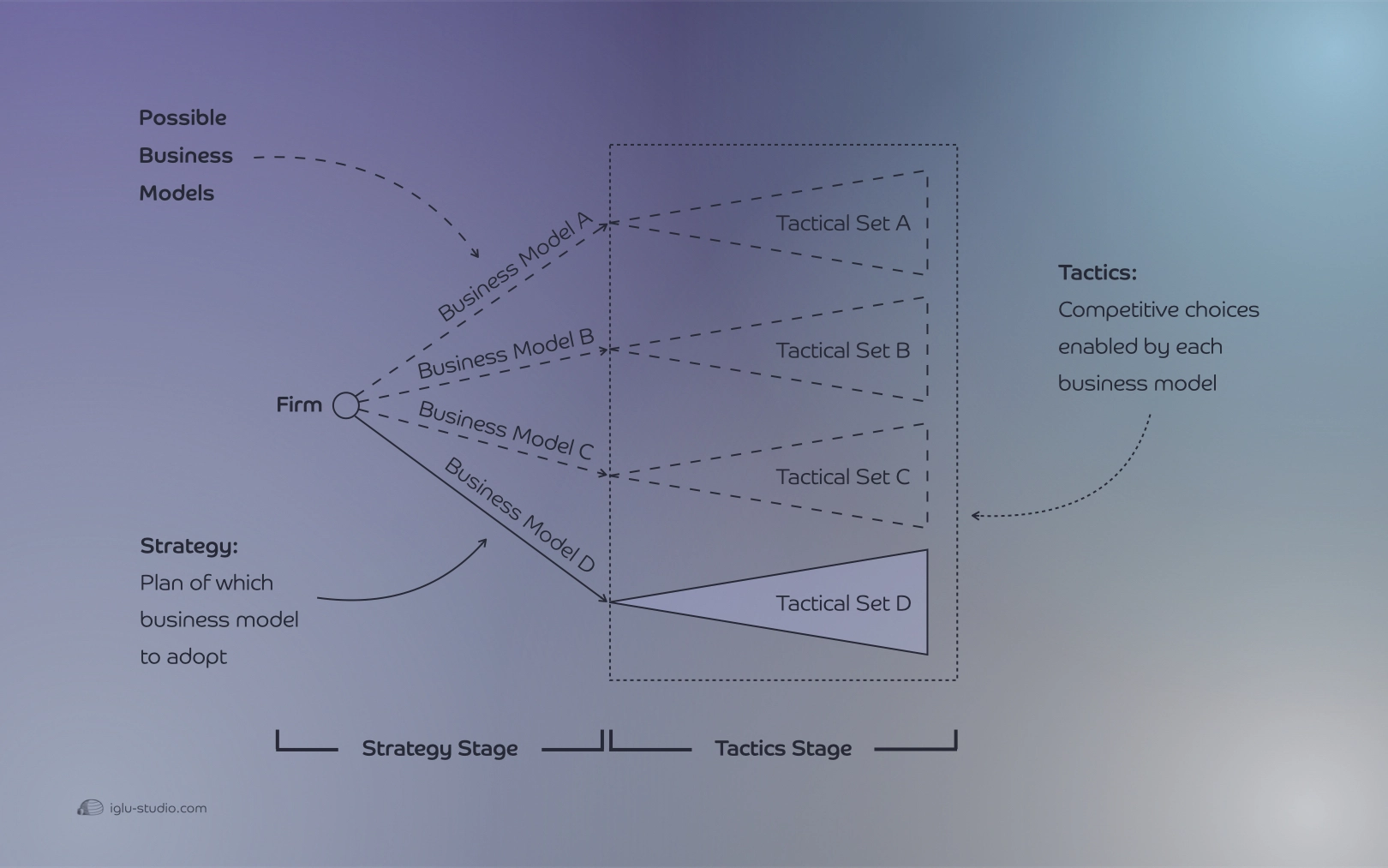Strategy, Business Models, and Tactics: Understanding the differences and how they interact
In the constantly shifting world of business, the boundaries between strategy, business models, and tactics are often blurred. Yet, understanding their differences and the way they interact is essential for making coherent, competitive, and sustainable decisions.
Building on the foundations laid in our earlier article "The Architecture of Business: A Perspective on the Business Model Canvas framework", where we explored the Business Model Canvas in depth and examined how its components work together, the framework by Casadesus-Masanell & Ricart offers a clear structure to untangle the relationship between strategy, business models, and tactics. Figure 6 in this seminal paper clearly maps the path from long-term strategic decisions to competitive operational tactics.

Strategy: Choosing the Game You Play
At its core, strategy is about making fundamental choices. It is the high‑level decision about how you will compete, and it begins with the selection of your business model.
In this view, strategy is not the day‑to‑day set of activities or operational tweaks. It is the commitment to a pathway for value creation and capture.
For a specialty coffee company, deciding to pursue a direct‑to‑consumer subscription model instead of relying solely on café sales is a strategic choice. It shapes every subsequent decision.
Business Model: The Logic of Value Creation and Capture
A business model is the logic that explains how a firm creates and delivers value to its customers, as well as how it captures part of that value for itself.
Casadesus-Masanell & Ricart conceptualize the business model as the realization of a strategy, which is the structure of choices and resources that make the strategy tangible.
In our coffee company example, the subscription model’s business logic might involve sourcing premium beans directly from farmers, roasting in small batches, delivering monthly to subscribers, and building a brand story around transparency and freshness.
This logic defines the set of tactics the company can choose from, although it is not yet about selecting those tactics.
Tactics: The Available Competitive Moves
Tactics are the specific competitive actions and adjustments available within the boundaries of the chosen business model.
They are not about changing the core model but rather about optimizing within it. For the coffee subscription business, tactics could include offering seasonal blends, running limited‑time promotions, or adding a loyalty program.
While tactics may shift rapidly, their scope is limited by the selected business model.
How They Connect: From Strategy to Tactics
Casadesus-Masanell & Ricart describe this relationship as a flow:
Strategy → Business Model → Tactical Choices.
- Strategy stage: Choosing the business model, which is the ‘logic’ through which the company will compete.
- Tactics stage: Selecting from the set of moves allowed by that model.
This sequence is not purely linear. Feedback loops exist, where tactical success or failure can lead to a reassessment of the model and even the strategy itself.
Practical Example: The Specialty Coffee Company
Let us bring the framework to life.
Scenario:
A specialty coffee company considers two strategic options:
- Operate cafés in premium urban locations.
- Focus on an online subscription service delivering freshly roasted beans.
If they choose Option 2 as their strategy, the business model will be built around e‑commerce infrastructure, logistics partnerships, direct sourcing contracts, and subscription management systems.
From there, tactical choices might include:
- Limited‑edition blends tied to regional harvests.
- Cross‑selling brewing equipment.
- Collaborations with lifestyle influencers in the coffee niche.
It is important to note that none of these tactical moves challenges the core subscription business model. They work entirely within its structure.
Why This Distinction Matters
Confusing strategy with tactics often leads to scattered decision‑making. A tactical success does not replace the need for a clear strategy, and a strong business model cannot compensate for a poor strategic choice.
Separating these layers helps leaders:
- Maintain a stable long‑term vision while iterating operationally.
- Understand the constraints of their chosen model.
- Avoid chasing tactical trends that dilute brand coherence.
The clarity between strategy, business model, and tactics is not a matter of theoretical semantics. It is operational survival.
By making these distinctions explicit, companies can better align their daily actions with long‑term objectives, ensuring that each decision reinforces the intended
Source Article Metadata
• Title: From Strategy to Business Models and Tactics
• Authors: Ramon Casadesus-Masanell, Joan Enric Ricart
• Journal: Long Range Planning
• Year: 2010
• Volume/Issue: Vol. 43, Issues 2–3
• Pages: 195–215
• Publisher: Elsevier Ltd.
• ISSN: 0024-6301
• DOI: 10.1016/j.lrp.2010.01.004


